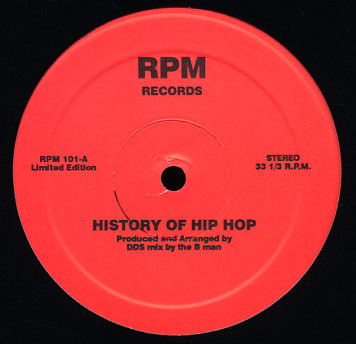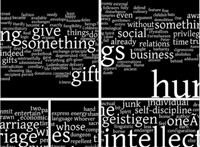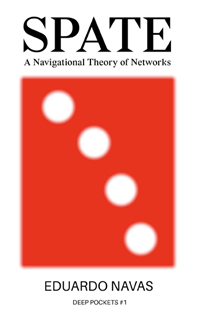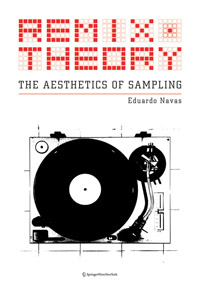Deleuze/Guattari: Remix Culture, Paul D. Miller Interviews Carlo Simula

Image source: Dusty Groove
Text source: Nettime.org and Djspooky.com
November 20, 2005
The following is an interview with Carlo Simula for his book
MILLESUONI. OMAGGIO A DELEUZE E GUATTARI (Cronopio Edizioni)
Contributions will include Guy-Marc Hinant (Sub Rosa), Philippe Franck (transcultures, le maubege), Bernhard Lang, Tim Murphy, Achim Szepanski – and many others. I think it’s an update on some issues that have been percolating.
Smell the brew.
Paul,
Tunis, Tunisia 11/20/05
1) You’ve often referred in your interviews to how much contemporary philosophy has influenced your work. Foucault said “Un jour, peut-être, le siècle sera deleuzien”, how much and in which way Deleuze and Guattari influenced you? And what you feel is interesting in their work?
The idea of the “remix” is pretty trendy these days – as usual people tend to “script” over the multi-cultural links: the economics of “re-purposing,” “outsourcing” and above all, of living in an “experience economy” – these are things that fuel African American culture, and it’s active dissemination in all of the diaspora of Afro-Modernity. My take on Deleuze and Guattari is to apply a “logic of the particular” to the concept of contemporary art. Basically it’s to say that software has undermined all of the categories of previous production models, and in turn, molded the “computational models” of how “cultural capital,” as Pierre Bourdieu coined it, mirrors various kinds of production models in a world where “sampling” (mathematical and musical), has become the global language of urban youth culture. Eduoard Glissant, the Afro-Caribbean philosopher/linguist liked to call this “creolization” – I like to call it “the remix.” Philosophy is basically a reflective activity. It always requires a surface to bounce off of. We don’t exist in a cultural vacuum.
Basically I look at Deleuze/Guattari as two figures who act as translators of European philosophy and aesthetics into some kind of exit for people who are concerned with humanism. Think: Frantz Fanon wrote about this as a kind of update on Existentialism – the “gaze” that defines the world today is “brown” – but it is contained in a strange cadence. It’s a visual rhythm that extended the idea of philosophy into spectrums that have yet to be mapped out. European philosophy has usually been totally eurocentric for the last several centuries, and Deleuze and Guattari are the two philosophers who have taken the idea of philosophy past the limits of previous thinkers. Aristotle created the idea of taxonomy for the West several thousand years ago. Deleuze and Guattari have taught us to move beyond the categories he defined, and have helped create tools for analyzing how complex out mediated lives have become. I think of their concepts like the “Abstract machine,” the “body without organs,” and the “immanent plane” of action/realization as almost beyond the categories of European philosophy. They are humanists who look for meaning beyond the norms. That’s where my music and their thoughts intersect.
Essentially, for me, music is a metaphor, a tool for reflection. We need to think of music as information, not simply as rhythms, but as codes for aesthetic translation between blurred categories that have slowly become more and more obsolete. For me, the Dj metaphor is about thinking around the concept of collage and its place in the everyday world of information, computational modelling, and conceptual art. All of them offer exits from the tired realms of Euro-centric philosophy into some kind of pan humanism. That’s why I like Deleuze and Guattari’s work. Other figures from the European aesthetic realm like Ludwig Feuerbach (who promoted the idea of “humanism” in his works of the mid 19th century), Spinoza, and Giordano Bruno’s exploration of Semiotics are also influences, but the basic sense of “rhizomatic” thought – thinking in meshworks, in nets that extend to other nets – it’s the driving force of my music and art. I think it’s a great place to start thinking about a philosophy of “the remix.” The “remix” is about certain kinds of polyphony – it’s about making multiple rhythms work together, synchronized, cut, pasted, and collaged. That’s the real “abstract machine” – cross reference that with James Brown, think Garrett A. Morgan (the African American inventor of the street light – the choreography on every street corner of the global megalopolis), think Duke Ellington with his “Afro-Eurasian Eclipse” jazz modernity, think Albert Murray’s essay “Spyglass Tree”, think Detroit’s underground forerunners, stuff like Drexciya… the list goes on. etc etc
2) I see many analogies between your work and Deleuze and Guattari’s, especially when they talk about the “concept” as a way to define the world, defining it as an “event.” The production of a concept is therefore the way philosophy builds the understanding of the real world. It seems to me that in Rhythm Science you talk a lot about sampling and the figure of the DJ as a manipulator of images, sounds, technologies used to create, exactly, “concepts.” What do you think about it?
One of my favorite books of the last several years, African Philosophy: An Anthology edited by Emmanuel Chukwudi Eze, explores this kind of thing: how do we re-map the scripted territories of Eurocentric thought to create new tools, new ways of thinking about the multi-plex scenario any idealist will find at the end of any investigation of philosophy in the 21st century. For Deleuze and Guattari, and for me, the idea is always an “event” – it presupposes a kind of frame of reference that closes one action and starts another – they overlap and blur. For me “sampling” is the same thing: thought event, sound event. Computers generate algorithms that create tableaux of continuous uncertainty – the screen is not a locked space. My work asks about how the networks of creativity that we have inherited from the “bricks and mortar” world of the 20th century, have imploded, evolved and accelerated the “im-material” networks of the frequencies, fiber optic networks, and mathematically driven world of the 21st century. That’s the real “dematerialization of the art object” – it becomes patterns meshed, working between the spaces of pre-scripted behavior. My book Rhythm Science looked at foundations of contemporary thinking from the viewpoint of “how do we make art out of patterns of culture?” It was meant to ask more questions, not offer answers to contexts that are continually changing. The landscape of contemporary digital media is undefined. Anything that tells you it is “defined” is pretty much making a false observation. The undefined defined? Heraclitus said something like this years ago – dj culture tells us it has become the way we organize information in a media ecology of unstable subjectivity. My take on this is basically “pro-active” – for me, music is all about creating tools for thinking – about giving people systems to organize information outside of the European categories of “rationality” and “universal subjectivity” that drove the Enlightenment. That is what I learned from them. Abstraction is the ultimate weapon. Multiculturalism is the ultimate destabilizing category because, like sampling, it can absorb anything. It defies limits, and posits “the subject” as an imploded category – one that is, and always has been, basically a construct. What other constructs – the nation state, the idea of the “self” etc – are linked to this category that is slowly being pulled apart by the centrifugal forces of digital media? Deleuze and Guattari give us tools to think about this kind of stuff – they posit these as fictions holding together other fictions. The mirror is held up to another mirror, and we can see an infinite corridor in either direction. I kind of want to break the mirror. Warhol’s “From A to B and Back Again” drifted as word dust through the fiber optic cables and satellite transmissions of a world of invisible meshworks. Stuff like that.
3) Among other things the cd inside the book Rhythm Science is a concentrated “improvisation” of the Subrosa archive, a label which more than others promoted a certain genre of music connected to art.. It reminded me, with the proper differences, John Oswald’s “Greyfolded”, where he ends up building a version of Grateful Dead’s “Dark Star” from hundreds of live versions. Thoughts?
The “fold” is about involution – it’s about taking multiple perspectives on an event – just like the “break” in hip-hop, it’s the break beat, the broken fragment of time recorded on the sample that gives the “flow” of discourse its meaning in this context. In dj culture, you create structure from sequences. My style is the sound track to urban sprawl. It’s my way to look at compositional strategy in the era of digital media. My favorite photographer, Etienne Jules Maret’s “stop motion photography” alludes to this kind of thing. The fragment is greater than the interpretation of Deleuze and Guattari was about, and if you look at John Cage’s idea of “indeterminancy” and it’s relationship to turntables – the concept fits solidly. Composers have been using the “fold” for many centuries – the main issue is that they haven’t had the tools to describe the process. D&G gave us those tools – I guess I look more to stuff like Grand Master Flash’s “Adventures on the Wheels of Steel,” Steinski and Double D’s “Hip-hop Lessons” than John Oswald, but we’re both driven by the same concept. The idea of collage drives my mixes – that’s the point. Contemporary art – art that explores the economies of scale that software allows us to explore – points to the idea of the “input-output” schemata that Delueze and Guattari talked about with their concept of the body without organs. I think it’s a good analogy. I really want to set music up as a platform – I want to make sure to remind people, that yes, I’m an artist… It’s really weird how much people are set against the idea of existing in multiple contexts. Mono-reality… something like that. It’s boring. Again, the D & G connection about multiple situations occurring simultaneously – reflects the “post post modern” scenario – it’s not about “deconstruction,” but reconstruction – of building a new vision of how we can live and think in the info ecology we’ve built for ourselves. And so on, and so on, and so on…
4) I find very interesting that in “Cinema 1-Movement and image” Deleuze talks about D.W.Griffith cinema, referring to image-action (the example he refers to in particular is “Intolerance”), and Griffith’s articulation of the narration, that offers two examples of “civilization”: (black people/white people). It almost seemed to me that your remix of “Birth of a nation”, especially when played live, originates, with the obvious differences, from Deleuze’s same critical ground… your opinion on that..
Civilization, as Freud pointed out so long ago, is about rules and boundaries but it also inspires a kind of continuous renewal. At heart, civilizations are control mechanisms – they’re psychological more than they’re physical. They are meta-tools. For me, at the moment, it seems like the West is in a serious crisis of meaning. The Enlightenment went dark in the mass mechanized warfare of the two world wars, and the shattered remains were burned in the fire of Vietnam. Pretty much nothing remains. My music asks: how do we create new forms of meaning from these hollow ideals? We’ve moved far past Plato’s Republic into a realm where the “civic” aspects of culture as software are the new frames of reference. Software (credit card debt, individual assigned names on line, domain names, DNS routers, encryption, computer aided design that builds airplanes, routes electricity, guides DNA analysis etc etc there’s alot more but you get the point) regulates individual behavior – both on and off line – in the post industrialized world. Software for thinking: it’s an invisibly coercive concept. I like Deleuze’s take on “Intolerance” but you have to remember that film acts as a crucial myth device for a world based on the consumption of images. I think that we need to analyze film from the viewpoint of not only what the Situationists called “psycho-geography” – a place that posits movement between radically different environments as a causal principle in the way that we organize information, but what Deleuze and Guattari posit as “deterritorialization” is essentially a kind of nomadic response to media overload – finding ways through the information data-cloud. Griffith was essentially a propagandist for state repression – he created “cut-up” cinema as a tool to portray multiple situations – but exactly for the opposite of what Deleuze and Guattari would think about. He used it to lock down perception. They use it to open things up. Juxtapose the two, and you can see why two radically different thinkers like Sergei Eisenstein and Guy Debord liked to think of Griffith as the essence of American cinema. That’s the dj situation – origin, and destination blur: they become loops, cycles, patterns. The way to explore them is through the filter of woven meaning. Black culture has been the world’s “subconscious” for most of the last several centuries – it has been the operating system of a culture that refuses to realize that its ideals have died long ago. The threads of the fabric of contemporary 21st century culture, the media landscape of filaments, systems, fiber optic cables, satellite transmissions, and so on – these are all rhizomatic. They are relational architectures – the move in synchronization. The meshwork needs to be polyphonic. The gears move in different cadences, but they create movement. They need to be pulled apart so that we can break the loops holding the past and present together so that the future can leak through. Perhaps this is where we break with the old situation of “black” “white” – that stuff is really dumb any way. It’s all a lot more complex than that dualism. This is the new “operating system” I envisage when I remixed “Birth of a Nation” – the collapse of Wagner, the collapse of the Western scripts of linear progress, the renewal of a world where repetition is a kind of homage to the future by respecting the past.
Paul D. Miller a.k.a. DJ Spooky that Subliminal Kid
Tunis, Tunisia – 11/20/05
Lascia un commento
You must be logged in to post a comment.








